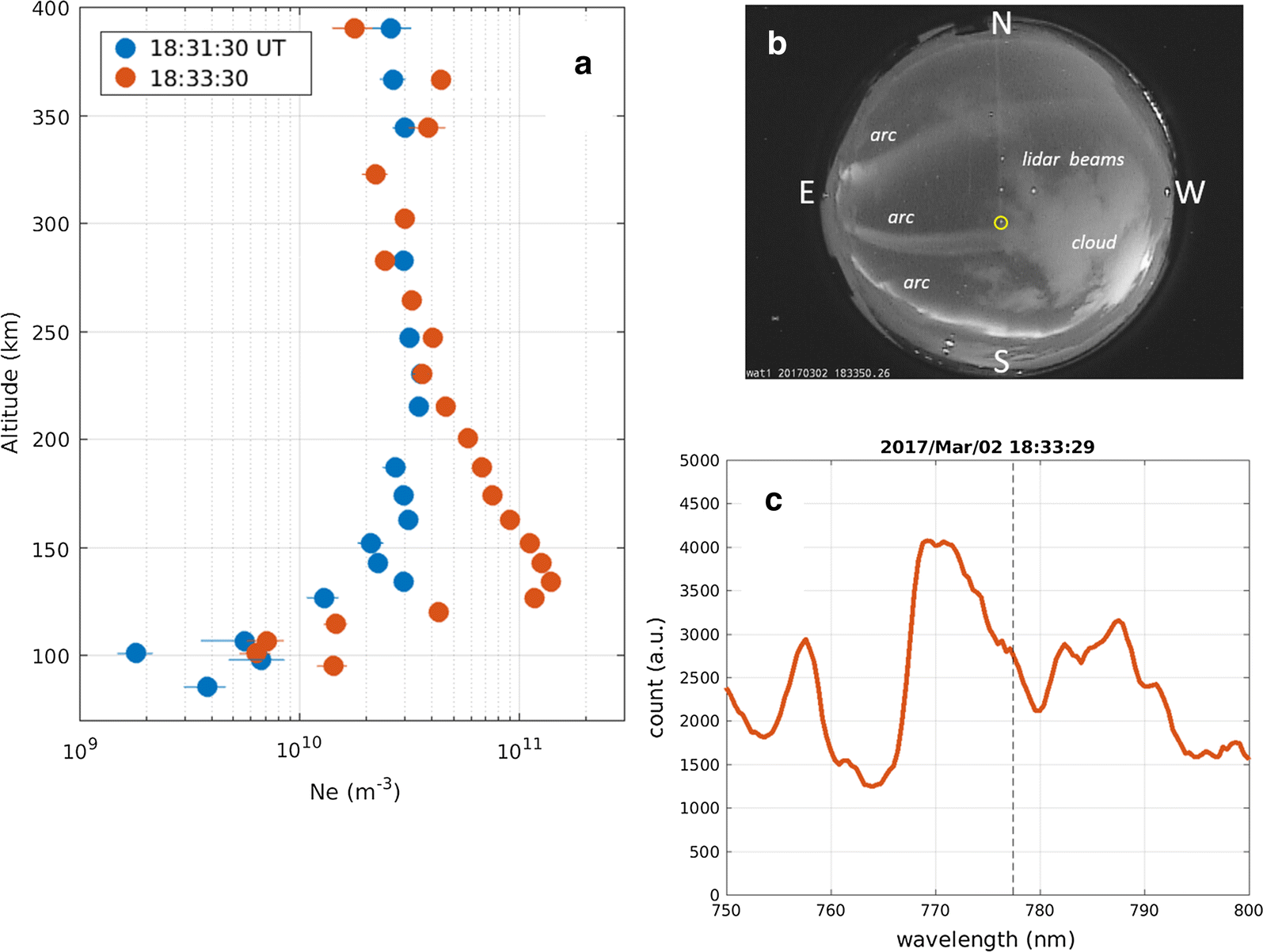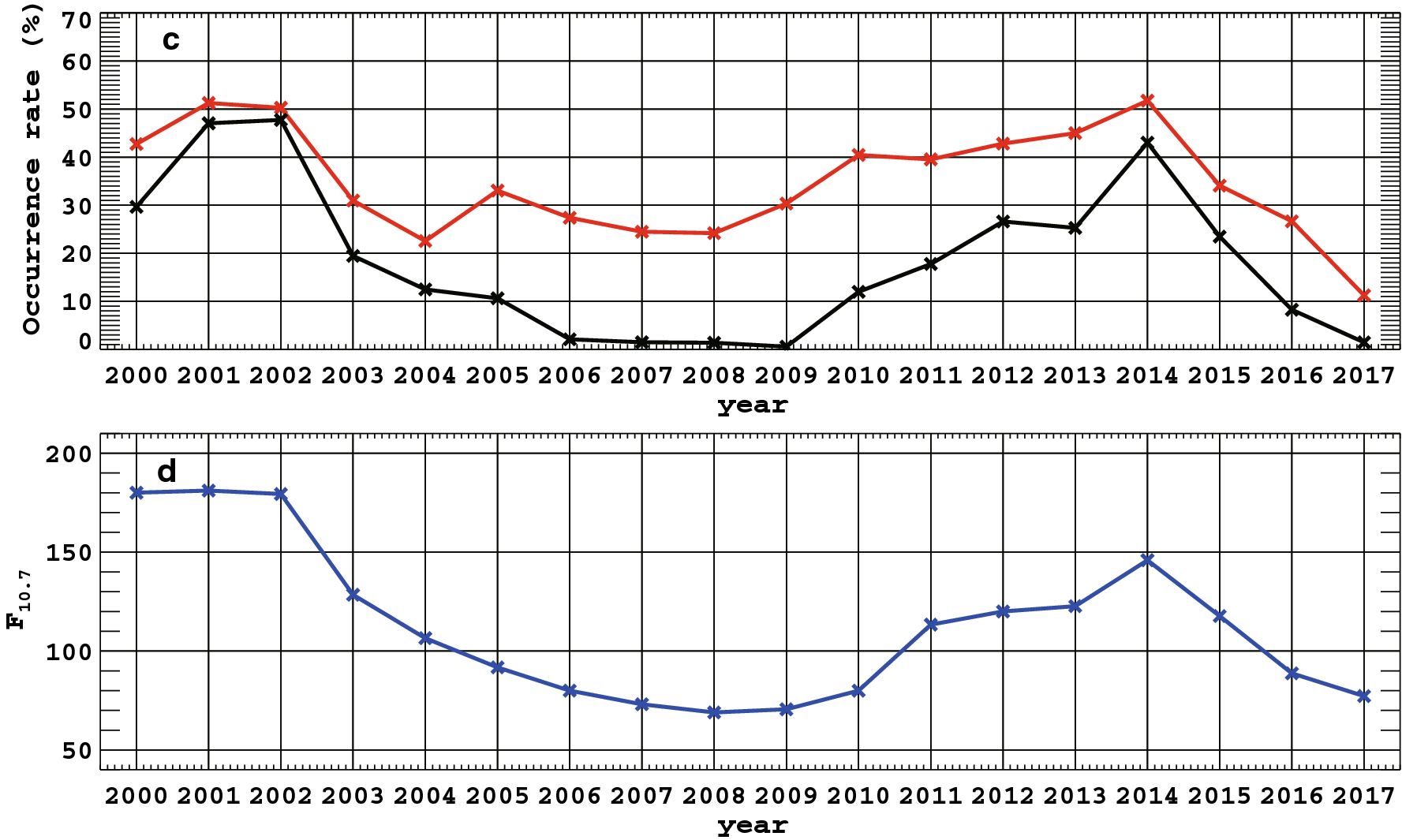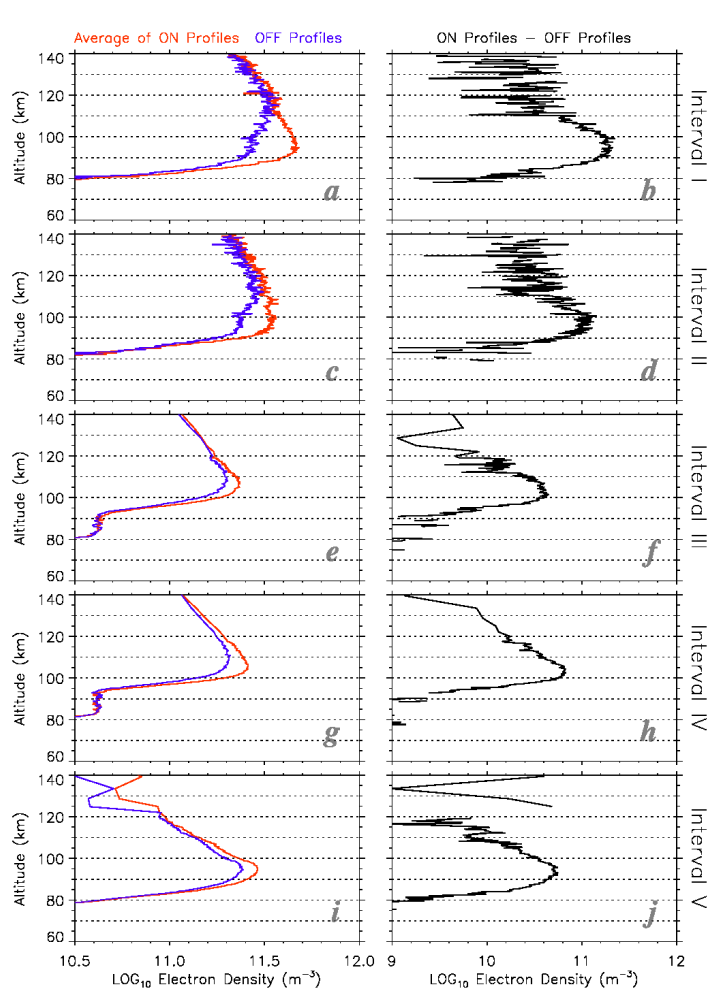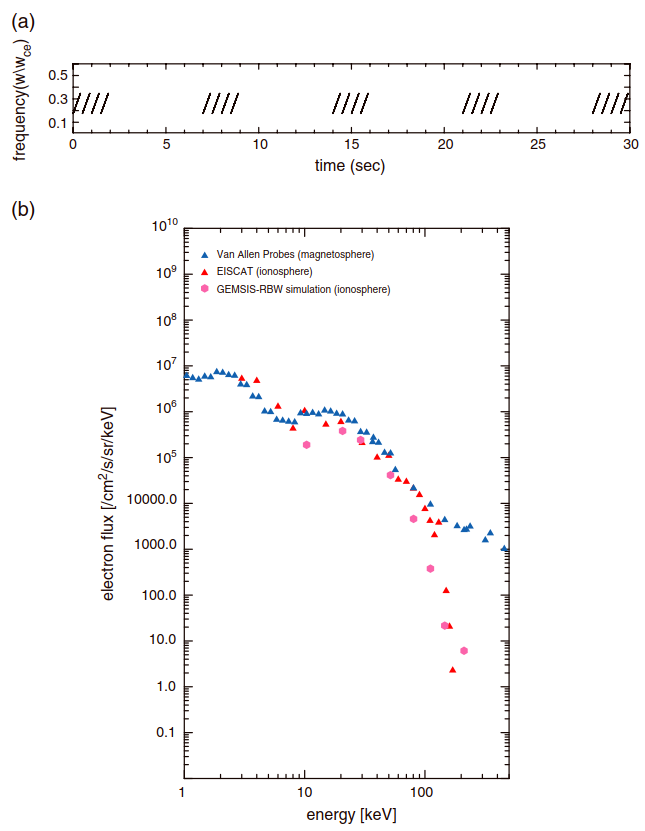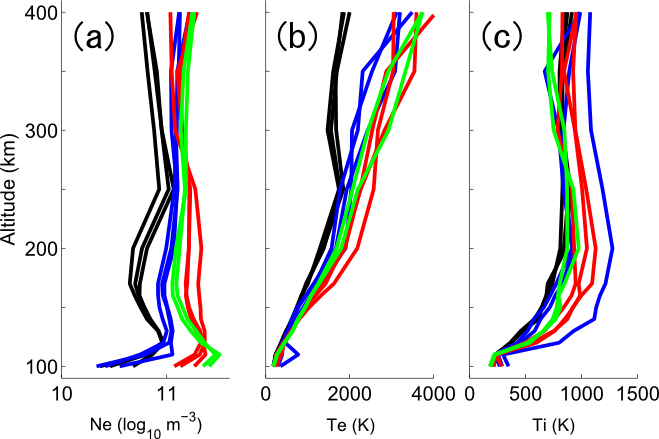Auroral molecular-emission effects on the atomic oxygen line at 777.4 nm (Oyama et al., 2018)2021.5.20
a) Height profiles of the EISCAT-measured electron density at 18:31:30 UT (blue) and 18:33:30 UT (orange) on March 2, 2017. Measurement uncertainty of +/-1s is marked by a horizontal bar in each color. b) An image of the Tromsoe all-sky camera, which was taken at 18:33:50 UT. The direction of the EISCAT radar and spectrograph measurements is marked by a yellow circle. Five faint lines from the northern edge represent contaminations of a sodium lidar. c) Spectrum measured at 18:33:29 UT on March 2, 2017, at wavelength of 750-800 nm. A vertical dashed line is marked at 777.4 nm
One of the representative auroral emission lines that radiates from F-region heights and is measurable on the ground is the 777.4 nm line from excited atomic oxygen. This line has been adopted, along with another E-region emission line, for example 427.8 nm, to estimate the mean energy and total energy flux of precipitating auroral electrons. The influence of emissions from part of the molecular nitrogen band, which mainly radiate from E-region heights, should be carefully evaluated because it might overlap the 777.4 nm atomic oxygen line in the spectrum. We performed statistical analysis of auroral spectrograph measurements that were obtained during the winter of 2016-2017 in Tromsoe, Norway, to derive the ratio of the intensity of the 777.4 nm atomic oxygen line to that of the net measurement through a typically used optical filter with a full width at half maximum of a few nm. The ratio had a negative trend against geomagnetic activity, with a primary distribution of 0.5-0.7 and a minimum value of 0.3 for the most active auroral condition in this study. This result suggests that the 30-50% emission intensities measured through the optical filter may be from the molecular nitrogen band.
Oyama, S., T. T. Tsuda, K. Hosokawa, Y. Ogawa, Y. Miyoshi, S. Kurita, A. E. Kero, R. Fujii, Y. Tanaka, A. Mizuno, T. Kawabata, B. Gustavsson, and T. Leyser, Auroral molecular-emission effects on the atomic oxygen line at 777.4 nm, Earth Planets Space, 70, 166, doi:10.1186/s40623-018-0936-z, 2018.
カテゴリ:Aurora

